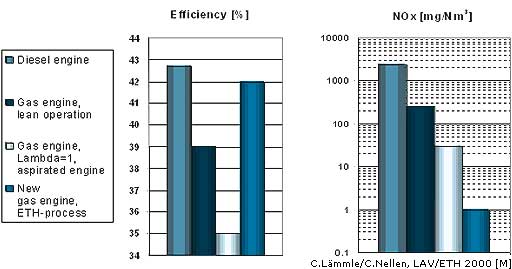|
ETHistory 1855-2005 | Rückblicke | Departemente | MAVT | none | Laboratorium für Aerothermochemie und Verbrennungssysteme LAV |
|
|
Wichtiger Hinweis:
Diese Website wird in älteren Versionen von Netscape ohne graphische Elemente dargestellt. Die Funktionalität der Website ist aber trotzdem gewährleistet.
Wenn Sie diese Website regelmässig benutzen, empfehlen wir Ihnen, auf Ihrem Computer einen aktuellen Browser zu installieren.
Weitere Informationen finden Sie auf
folgender Seite.
Important Note:
The content in this site is accessible to any browser or Internet device,
however, some graphics will display correctly only in the newer versions of
Netscape.
To get the most out of our site we suggest you upgrade to the latest
Netscape.
More information
The Aerothermochemistry and Combustion Systems Laboratory LAV emerged as successor organisation of IC Engines and Combustion Technology Laboratory (Prof. M.K. Eberle, 1983-2002) in 2002.
In the 90's the Lab was prominently active on advanced combustion systems development (inventing and implementing among others common-rail injection in a variety of applications), hybrid powertrain technology, as well as laser diagnostics and computational reactive fluid dynamics (CRFD).The research focus of LAV is on fundamental aspects of chemically reactive flows employing thereby advanced simulation techniques and non-intrusive, mainly laser based methods. Application oriented research aims at transferring fundamental knowledge to industry in order to help make the vision of "zero emission" combustion systems a reality. Simulation methods include Direct, Large-Eddy and Reynolds-Averaged Numerical Simulation of Reactive Systems including mesoscale, Lattice-Boltzmann methods for reactive and transport processes in flows on surfaces and in microchannels. State of the art test facilities (optically accessible engines, rapid compression machines, burners, CCD/ICCD cameras, several lasers) and computational infrastructure (include a 64-processor Linux-Cluster) support our research efforts. Collaboration with industry includes 20 industrial partners worldwide and deals among others with advanced optimization methods for combustion systems and electrochemical devices, miniaturized optical sensors for on-line control of combustion processes, investigation of reactive properties of emerging fuels (biogenic, hydrogen-containing), for propulsion and cogeneration simulation for optimal design of microreactors for portable power, reformers and catalysts.

|
|